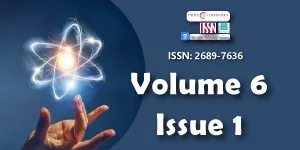Two methods for determining combinatorial identities
Main Article Content
Abstract
Two methods are presented for determining advanced combinatorial identities. The first is based on extending the original identity so that it can be expressed in terms of hypergeometric functions whereupon tabulated values of the functions can be used to reduce the identity to a simpler form. The second is a computer method based on Koepf's version of the Wilf-Zeilberger approach that has been implemented in a suite of intrinsic routines in Maple. As a consequence, some new identities are presented.
Downloads
Article Details
Copyright (c) 2023 Kowalenko V.

This work is licensed under a Creative Commons Attribution 4.0 International License.
Licensing and protecting the author rights is the central aim and core of the publishing business. Peertechz dedicates itself in making it easier for people to share and build upon the work of others while maintaining consistency with the rules of copyright. Peertechz licensing terms are formulated to facilitate reuse of the manuscripts published in journals to take maximum advantage of Open Access publication and for the purpose of disseminating knowledge.
We support 'libre' open access, which defines Open Access in true terms as free of charge online access along with usage rights. The usage rights are granted through the use of specific Creative Commons license.
Peertechz accomplice with- [CC BY 4.0]
Explanation
'CC' stands for Creative Commons license. 'BY' symbolizes that users have provided attribution to the creator that the published manuscripts can be used or shared. This license allows for redistribution, commercial and non-commercial, as long as it is passed along unchanged and in whole, with credit to the author.
Please take in notification that Creative Commons user licenses are non-revocable. We recommend authors to check if their funding body requires a specific license.
With this license, the authors are allowed that after publishing with Peertechz, they can share their research by posting a free draft copy of their article to any repository or website.
'CC BY' license observance:
|
License Name |
Permission to read and download |
Permission to display in a repository |
Permission to translate |
Commercial uses of manuscript |
|
CC BY 4.0 |
Yes |
Yes |
Yes |
Yes |
The authors please note that Creative Commons license is focused on making creative works available for discovery and reuse. Creative Commons licenses provide an alternative to standard copyrights, allowing authors to specify ways that their works can be used without having to grant permission for each individual request. Others who want to reserve all of their rights under copyright law should not use CC licenses.
Weintraub SH. The Adjoint of Differentiation, delivered in the Experimental Mathematics seminar, Rutgers University. Nov 6 2014. https://vimeo.com/111794318 & https://vimeo.com/111794317.
Weintraub SH. The Adjoint of Differentiation, Experimental Mathematics. 2014; 23:429-432.
Wolfram S. Mathematica- A System for Doing Mathematics by Computer, Addison-Wesley, Reading, Massachusetts. 1992.
Gradshteyn IS, Ryzhik IM, Jeffrey A (Eds.). Table of Integrals, Series and Products, Fifth Ed., Academic Press, London, USA. 1994.
Prudnikov AP, Brychkov YuA, Marichev OI. Integrals and Series, Vol. 3: More Special Functions, Gordon and Breach, New York. 1990.
Prudnikov AP, Brychkov YuA, Marichev OI. Integrals and Series. Special Functions, Gordon and Breach, New York. 1986; 2:421.
Wilf HS, Zeilberger D. Rational Functions Certify Combinatorial Identities, J. Amer. Math. Soc. 1990; 3:147-158.
Koepf W. Hypergeometric summation. Vieweg, Braunschweig/Wiesbaden. 1998.
Zeilberger D. A Fast Algorithm for Proving Terminating Hypergeometric Identities, Discrete Math. 1990; 80(2):207-211.

